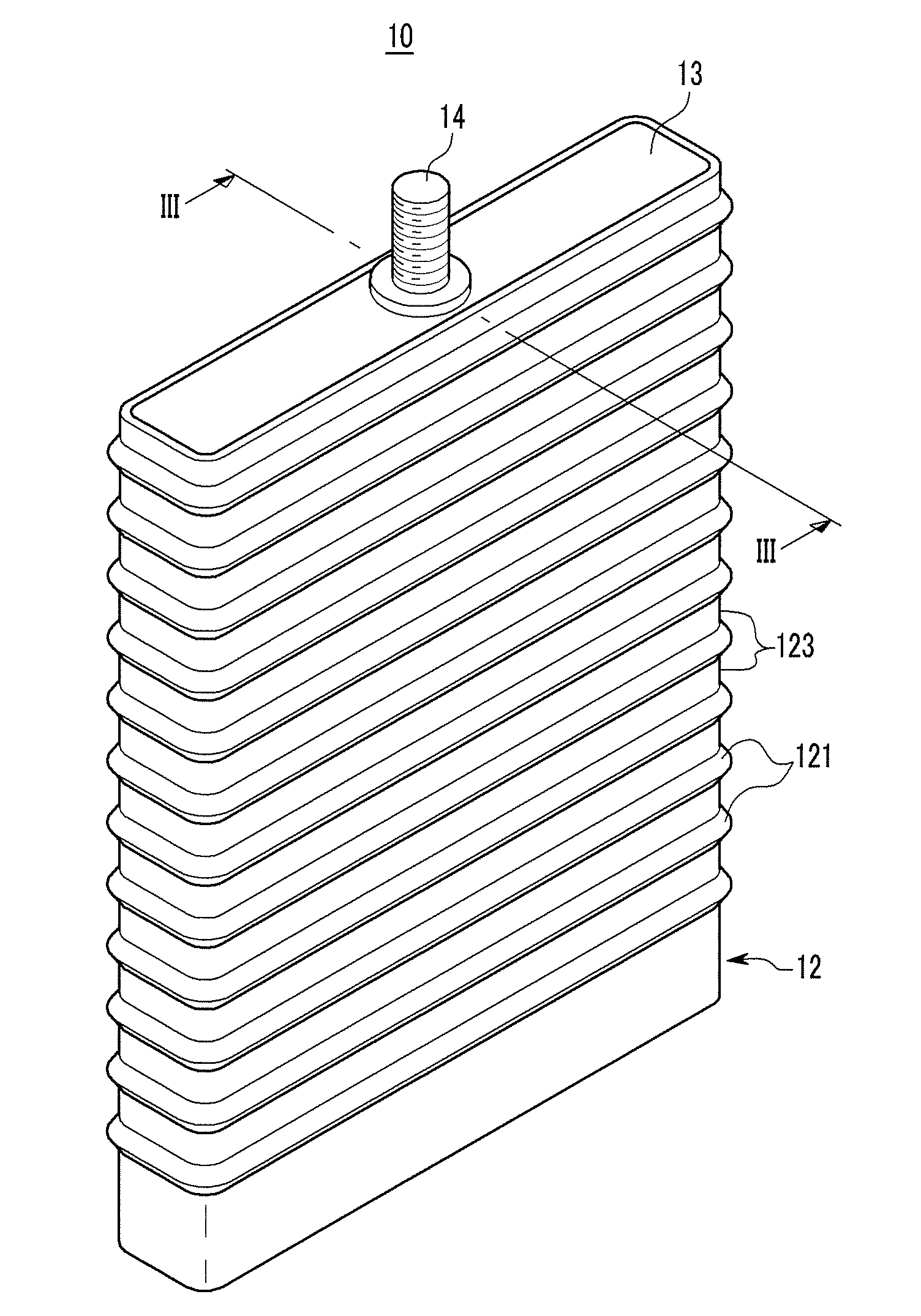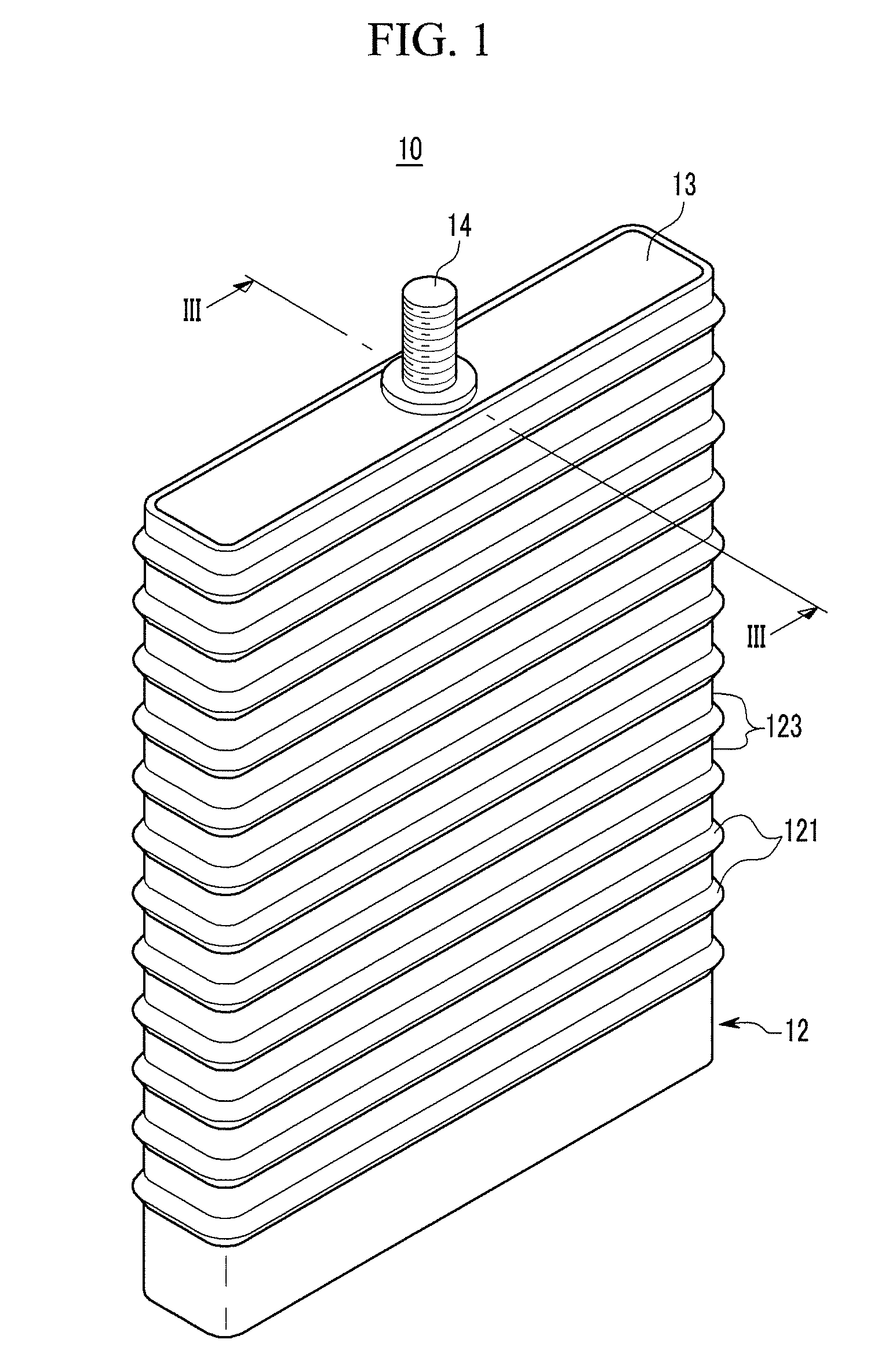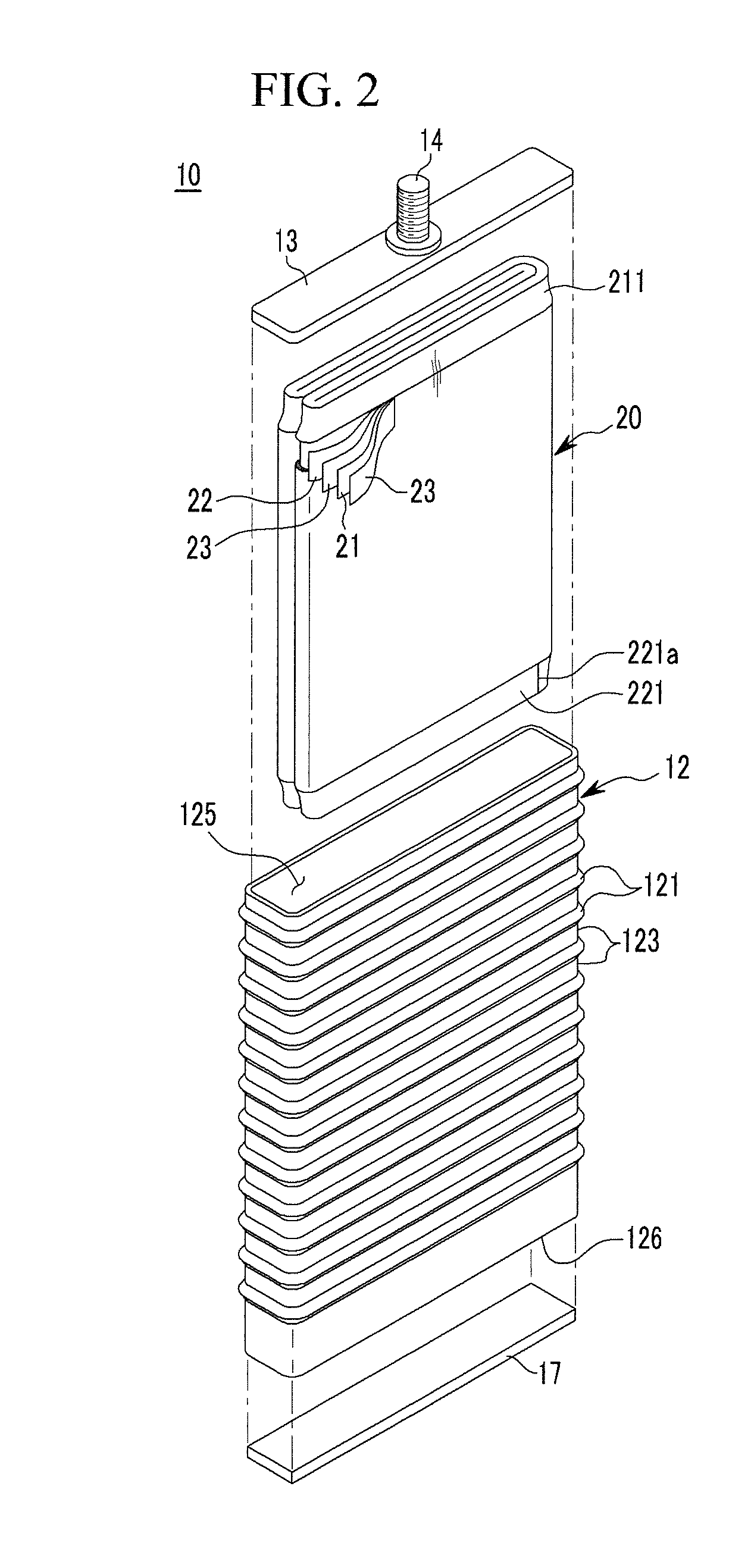Rechargeable battery having an extendable case region
a rechargeable battery and extendable case technology, applied in the field of rechargeable batteries, can solve the problems of difficult view, radically deteriorating battery life, etc., and achieve the effects of reducing contact resistance, easy interrupting current, and easy dissipation of hea
- Summary
- Abstract
- Description
- Claims
- Application Information
AI Technical Summary
Benefits of technology
Problems solved by technology
Method used
Image
Examples
first embodiment
[0055]FIG. 1 is a perspective view of a rechargeable battery according to the present invention, and FIG. 2 is an exploded perspective view of the rechargeable battery shown in FIG. 1.
[0056]Referring to FIG. 1 and FIG. 2, the rechargeable battery 10 includes an electrode assembly 20 where positive and negative electrodes 21 and 22 are wound by interposing an insulating separator 23 therebetween, a case 12 mounting the electrode assembly 20 therein, terminals electrically coupled to the electrode assembly 20, and a first plate 13 fitted to a first opening 125 formed at the case 12.
[0057]The electrode assembly 20 is formed by winding the positive and negative electrodes 21 and 22 while interposing the separator 23 therebetween. After being wound, the electrode assembly 20 is flatly pressed in the shape of a plate, and is folded such that the outer surfaces thereof contact each other. In this way, when the electrode assembly 20 is folded, a tensional force is generated at the innermost...
third embodiment
[0083]FIG. 5 is a cross-sectional view of a rechargeable battery according to the present invention.
[0084]Referring to FIG. 5, a rechargeable battery 60 according to the present embodiment has the same structure as that of the rechargeable battery according to the first embodiment except for the interconnection structure of a case 40, an electrode assembly 20, and a second plate 17, and descriptions of the same structures will not be provided again.
[0085]The case 40 has a quadrangular horizontal section, and a variable region (or case region) 42 with bent units (e.g., peaks and / or valleys) is formed on the circumference of the case 40. That is, the variable region 42 has peaks and / or valleys, e.g., convex portions 42a protruded from the outer surface of the case 40, and concave portions 42b protruded from the inner surface of the case 40.
[0086]The variable region 42 is continuously formed along the circumference of the case 40, and a plurality of units of the variable region 42 are ...
fourth embodiment
[0089]FIG. 6 is a cross-sectional view of a rechargeable battery according to the present invention.
[0090]Referring to FIG. 6, a rechargeable battery 70 according to the present embodiment has the same structure as that of the rechargeable battery according to the first embodiment except for the structure of a case 80, and descriptions of the same structures will not be provided again.
[0091]The case 80 is formed with a quadrangular horizontal section, and has an upper member 81 to which a terminal 14 is fitted, and a lower member 83 connected to the upper member 81 via a variable region 85. However, the present invention is not limited thereto, and the case may be formed with a circular shape or other shapes.
[0092]The variable region 85 accommodates greater elongation than the upper and lower members 81 and 83. The variable region 85 includes a variable plate 851, and a corrosion resistant layer 853 formed on the inner side of the variable plate 851 (on the side thereof facing the e...
PUM
| Property | Measurement | Unit |
|---|---|---|
| thickness | aaaaa | aaaaa |
| electrical coupling | aaaaa | aaaaa |
| chemical energy | aaaaa | aaaaa |
Abstract
Description
Claims
Application Information
 Login to View More
Login to View More - R&D
- Intellectual Property
- Life Sciences
- Materials
- Tech Scout
- Unparalleled Data Quality
- Higher Quality Content
- 60% Fewer Hallucinations
Browse by: Latest US Patents, China's latest patents, Technical Efficacy Thesaurus, Application Domain, Technology Topic, Popular Technical Reports.
© 2025 PatSnap. All rights reserved.Legal|Privacy policy|Modern Slavery Act Transparency Statement|Sitemap|About US| Contact US: help@patsnap.com



